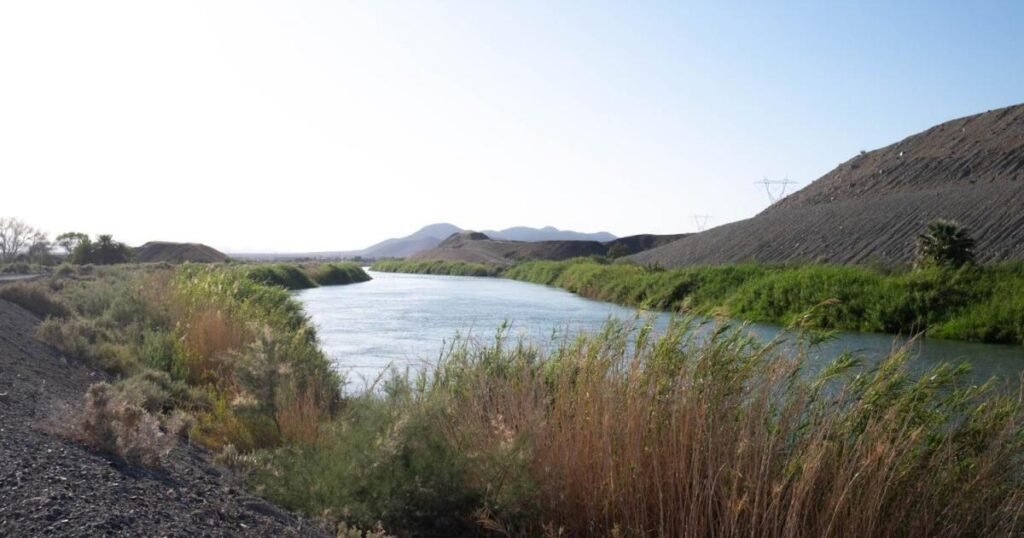It's impossible to talk about water in Arizona without talking about the Colorado River.
The river provides water to 40 million people across the American West, including more than two dozen tribes, cities like Phoenix and Tucson, and agriculture. It flows approximately 1,450 miles and empties into seven U.S. states, including Arizona, and two Mexican states.
Yuma Valley could be said to be at the center of it all: in Arizona's westernmost region, it borders both Mexico and California, but the change is hardly felt in the agriculture that defines the region, such as that of Jesús Tovar.
“About 50 to 55 percent of the land I farm is here in Yuma Valley, and the rest is on the Quechan Reservation in California, the Quechan reservation,” he says. “We grow cabbage, cauliflower, broccoli, pretty much everything you can think of.”
Tovar has been farming here for 40 years. Born in Mexico and raised just across the state line in California, he is now the owner of T&P Farms Inc.
We're on a dirt road in the middle of his fields. On either side, tall leaves of durum wheat in different stages of production sway in the wind. Like many farmers here, T&P Farms specializes in leafy greens; in fact, the Yuma area processes about 90 percent of the U.S.'s leafy greens during the winter. Tovar says minerals left behind when the river once flooded are part of what makes the land so fertile.
“Everything that's produced here is at its best because of water. Water is life,” he said. “The world is always changing and we're changing with the world. One thing is for sure, we're very lucky to have water rights.”
But how does that water get here today? And what determines where it goes?
Nearby, Tom Davis, general manager of the Yuma County Water Users Association, showed me part of the process.
“Okay. See that structure in the canal? That's a measuring device,” he said, pointing to a round scale on a metal stake in the water.
We're looking at a cement canal that carries water from the Colorado River, part of a complex network of dams, aqueducts, pipelines and canals that span the Colorado Basin's interstate borders. It has large metal gates that plunge into the water, controlled by a master system in Davis' office.
“If he wants to put more water in this ditch, he lowers the gate a little bit, lets the water in, and then opens this gate a little bit more,” he said.
Farmers, residents and businesses who are members of the water association tell them how much water they need for irrigation, and dozens of gates installed throughout the system move up and down throughout the day to release the water.
“At the peak of the season, a refrigerated truck leaves Yuma every 90 seconds delivering produce somewhere across North America,” Davis said.
The Yuma County Water Association was established in 1903, before Arizona became a state. Unlike other Arizona irrigation and water management districts, which are state-managed, the association is a private entity. It is the oldest river water rights holder in Arizona, second only to the Colorado River Indian Tribe (CRIT) of Parker.
“In theory — and no one knows if that's going to happen — in theory, everyone except the Colorado River Indian tribes would get the last drop of water in Arizona,” Davis said.
It's part of the Rivers Act, a series of compacts between water-using states that allow Arizona, California and Nevada (known as the Lower Basin states) to collectively use up to 7.5 million acre-feet of water each year.
Yuma farms have some of the oldest and strongest claims to water, just across the state line in California. Nick Barr manages the Byrd Water Authority, which also helps sustain the farms.
“I don't know of any other area like this outside of the Yuma area with farmland on both sides. It's pretty unique,” he said.
Meanwhile, cities like Phoenix and Tucson have junior water rights. Under existing agreements, they would be the first to make cuts if there was a shortage. But Barr says that was called into question several years ago when the Bureau of Water Reclamation proposed making cuts equally across the board instead.
“You know, we've spent over 100 years figuring out the laws of the river and how everything flows, and then when it actually comes down to it, one of the responses is to throw everything away and cut off everyone,” he said.
As a result, he says, junior and senior rights holders have taken a renewed interest in finding alternative solutions.Megan Scott, a water attorney with Noble Law Firm in Yuma, said states and other entities that use water want to have a say in how it's protected.
“The idea that we can control our own destiny as a state, or as a lower or upper basin or as an entire basin,” she said. “I think that's a much better idea than leaving it up to the federal government.”
This month, the federal government formally approved a plan drawn up by downstream states to save 3 million acre-feet of water by 2026 through a series of voluntary cuts aimed at keeping more water in Lake Mead and Lake Powell. California, Arizona and Nevada have submitted separate proposals for beyond 2026, aiming to save 3.9 million acre-feet.
Arizona Department of Water Resources Director Tom Buschatzke said a variety of water users, including agriculture, agreed to the cuts.
“My hope is that as a result all water users who benefit from the river will contribute, if that means voluntarily, to the protection of the water system,” he said.
The Lower Basin plan is one of only a few that have been submitted, and Buschatzke said he hopes the efforts the states have already made to conserve water will help prioritize what to do next.







